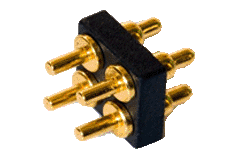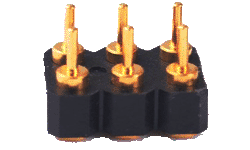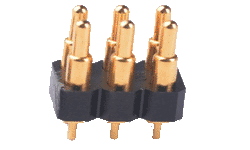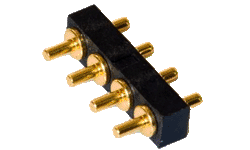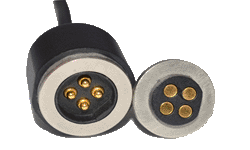2025-3-2 10:28:43
Pogo pins, as precision connector components, are widely used in testing, charging, and data transmission of electronic devices. However, in practical applications, soldering issues with pogo pins often trouble engineers and technicians. From material properties to soldering processes, from design flaws to environmental factors, the reasons why pogo pins cannot be soldered may involve multiple aspects. This article provides an in-depth analysis of the reasons behind soldering difficulties with pogo pins and offers detailed solutions.
1. Material Property Issues
The material selection for pogo pins directly affects their soldering performance. Common materials include copper alloys and stainless steel, which vary significantly in thermal conductivity and solderability. In a smart device testing scenario, improper material selection for pogo pins led to poor soldering, affecting testing accuracy.
Surface treatment is another critical factor. Pogo pins typically require surface treatments such as gold or nickel plating to enhance conductivity and corrosion resistance. However, improper surface treatment can lead to soldering difficulties. In a charging device, improper surface treatment of pogo pins caused solder joints to fall off.
The thermal expansion coefficient of materials is also a significant factor affecting soldering quality. Differences in thermal expansion coefficients between materials can generate stress during soldering, impacting soldering quality. In a high-precision testing device, mismatched thermal expansion coefficients caused solder joints to crack.
2. Soldering Process Issues
Temperature control during soldering is key to soldering quality. Excessively high soldering temperatures can cause pogo pin materials to deform or oxidize, while excessively low temperatures can result in weak solder joints. In an automated production line, optimizing soldering temperature control resolved pogo pin soldering issues.
Soldering time control is another important factor. Prolonged soldering times can overheat pogo pin materials, affecting their mechanical properties, while insufficient soldering time can lead to incomplete soldering. In an electronic device testing scenario, precise control of soldering time improved soldering quality.
Soldering pressure control is another critical factor. Excessive soldering pressure can deform pogo pins, while insufficient pressure can result in weak solder joints. In a high-precision testing device, optimizing soldering pressure control resolved pogo pin soldering issues.
3. Design Flaw Issues
The structural design of pogo pins directly affects their soldering performance. Poor design can lead to soldering difficulties or weak solder joints. In a smart device testing scenario, optimizing the structural design of pogo pins resolved soldering issues.
The design of solder joints is also an important factor. The shape, size, and position of solder joints directly impact soldering quality. In a charging device, optimizing solder joint design improved soldering quality.
The design of connectors is another critical factor. The structural design of connectors directly affects the soldering performance of pogo pins. In a high-precision testing device, optimizing connector design resolved pogo pin soldering issues.
4. Environmental Factor Issues
Ambient temperature is a significant factor affecting soldering quality. Excessively high or low ambient temperatures can lead to poor soldering. In an automated production line, controlling ambient temperature resolved
pogo pin soldering issues.
Ambient humidity is another important factor. Excessively high humidity can cause solder joint oxidation, affecting soldering quality. In an electronic device testing scenario, controlling ambient humidity improved soldering quality.
Environmental cleanliness is another critical factor. Contaminants such as dust and oil can lead to poor soldering. In a high-precision testing device, improving environmental cleanliness resolved pogo pin soldering issues.
5. Solutions and Optimization
Material selection and optimization are the first steps. Choosing suitable pogo pin materials ensures thermal conductivity and solderability. In a smart device testing scenario, optimizing material selection resolved soldering issues.
Soldering process optimization is the second step. Precise control of soldering temperature, time, and pressure improves soldering quality. In an automated production line, optimizing the soldering process resolved pogo pin soldering issues.
Design optimization is the third step. Optimizing the structural design of pogo pins, solder joint design, and connector design improves soldering quality. In a high-precision testing device, design optimization resolved pogo pin soldering issues.
Environmental control is the fourth step. Controlling ambient temperature, humidity, and cleanliness improves soldering quality. In an electronic device testing scenario, environmental control improved soldering quality.
The issue of pogo pins not being solderable may involve material properties, soldering processes, design flaws, and environmental factors. Through systematic troubleshooting and optimization, not only can soldering quality be improved, but the lifespan of pogo pins can also be extended, enhancing system stability and reliability. With continuous technological advancements, the design and manufacturing of pogo pins will continue to be optimized, providing stronger connectivity for electronic devices. In the future, the deep integration of pogo pins with new materials and processes will open a new chapter in connectivity technology.


